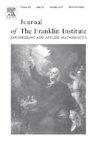Comment on: A robust observer based on the nonlinear descriptor systems application to estimate the state of charge of lithium-ion batteries
IF 3.7
3区 计算机科学
Q2 AUTOMATION & CONTROL SYSTEMS
Journal of The Franklin Institute-engineering and Applied Mathematics
Pub Date : 2024-09-23
DOI:10.1016/j.jfranklin.2024.107287
引用次数: 0
Abstract
In the paper by Meng et al. (2023), an observer is proposed for nonlinear singular systems. The authors claim that their method effectively handles nonlinearity and disturbances affecting both the dynamic and algebraic parts of the system. They compare the performance of their observer with that proposed by Darouach et al. (2011), focusing on observer design for nonlinear singular systems with disturbances affecting the dynamic and algebraic parts as well as the output of the system. Furthermore, this approach has been extended to several other classes of systems, as discussed in Zerrougui et al. (2014) [1], Darouach et al. (2013) [2], and Darouach et al. (2010) [3]. Meng et al. apply their observer to estimate the state of charge of a lithium battery in comparison with the results in Snoussi et al. (2020). In this note, we aim to highlight the discrepancies between our respective findings. Specifically, we explain that the observer proposed by Meng et al. (2023), is more restrictive and may not be suitable for singular systems with nonlinear algebraic components or disturbances affecting this part or affecting outputs. Additionally, Meng et al. (2023) revisit the framework introduced in Darouach et al. (2011), adding a particular form for the matrix that renders it more restrictive, without any contribution in the stability synthesis part.
评论基于非线性描述子系统的鲁棒观测器在锂离子电池充电状态估算中的应用
Meng 等人 (2023) 的论文提出了一种非线性奇异系统观测器。作者称他们的方法能有效处理影响系统动态和代数部分的非线性和干扰。他们将其观测器的性能与 Darouach 等人(2011 年)提出的观测器的性能进行了比较,重点关注非线性奇异系统的观测器设计,该系统的动态和代数部分以及输出都会受到干扰。此外,这种方法还扩展到了其他几类系统,如 Zerrougui 等人(2014)[1]、Darouach 等人(2013)[2] 和 Darouach 等人(2010)[3] 所讨论的那样。与 Snoussi 等人(2020 年)的研究结果相比,Meng 等人利用他们的观测器估算了锂电池的电荷状态。在本说明中,我们旨在强调我们各自研究结果之间的差异。具体来说,我们解释说,Meng 等人(2023 年)提出的观测器限制性更强,可能不适合具有非线性代数成分或干扰影响这部分或影响输出的奇异系统。此外,Meng 等人(2023 年)重新审视了 Darouach 等人(2011 年)提出的框架,为矩阵 Φ 增加了一种特殊形式,使其更具限制性,但对稳定性合成部分没有任何贡献。
本文章由计算机程序翻译,如有差异,请以英文原文为准。
求助全文
约1分钟内获得全文
求助全文
来源期刊
CiteScore
7.30
自引率
14.60%
发文量
586
审稿时长
6.9 months
期刊介绍:
The Journal of The Franklin Institute has an established reputation for publishing high-quality papers in the field of engineering and applied mathematics. Its current focus is on control systems, complex networks and dynamic systems, signal processing and communications and their applications. All submitted papers are peer-reviewed. The Journal will publish original research papers and research review papers of substance. Papers and special focus issues are judged upon possible lasting value, which has been and continues to be the strength of the Journal of The Franklin Institute.

 求助内容:
求助内容: 应助结果提醒方式:
应助结果提醒方式:


